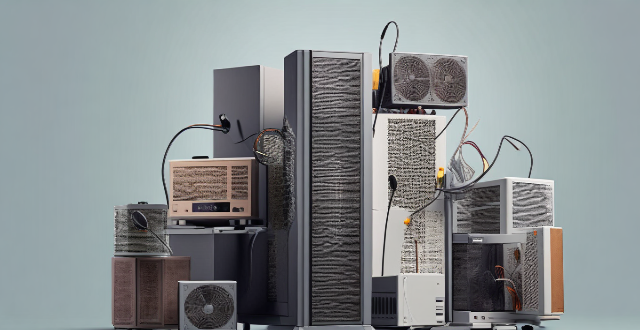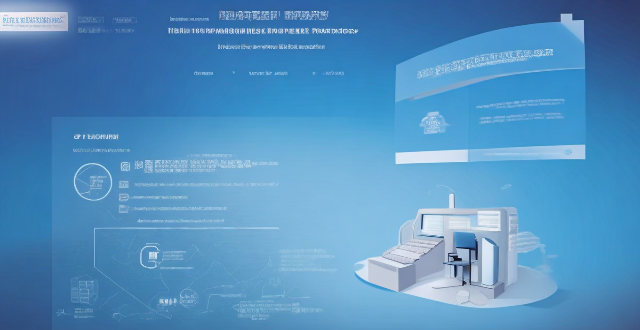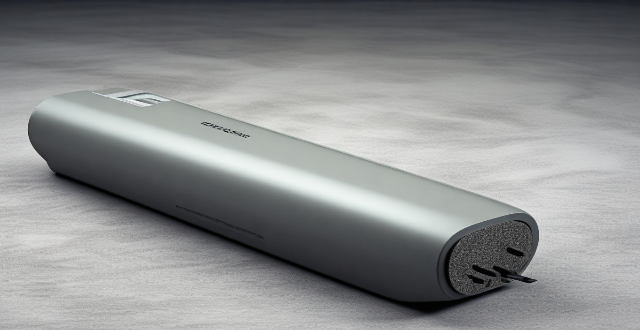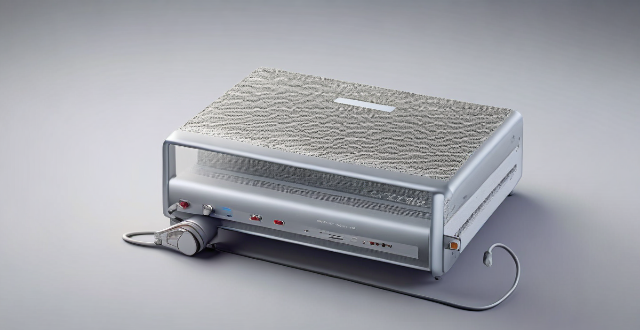Wi Upgrade

Do I need new hardware to use Wi-Fi 6, or can I upgrade just my router ?
The article discusses the compatibility of Wi-Fi 6 with existing devices and whether an upgrade to a new router or new hardware is necessary. It explains that while older devices can still connect to a Wi-Fi 6 router, they will not fully utilize its benefits. Upgrading just the router allows all devices to connect using the latest technology, but for optimal performance, it's recommended to have devices that also support Wi-Fi 6. The article outlines the benefits of upgrading both the router and devices, such as increased speed, improved performance in crowded areas, and enhanced battery life. It also suggests considering factors like compatibility, cost, and future-proofing before making an upgrade decision.

Will Wi-Fi 6 make my internet bill more expensive ?
Wi-Fi 6, the latest wireless networking standard, promises faster speeds and better performance but may come with additional costs. To fully utilize Wi-Fi 6, users may need to upgrade their router/gateway, change their internet plan, or invest in new compatible devices. However, there are ways to save money on these upgrades, such as shopping around for deals, negotiating with ISPs, considering a DIY approach, and evaluating your needs. By taking these steps, you can enjoy the benefits of Wi-Fi 6 without significantly increasing your internet bill.

Can I upgrade my broadband speed without changing my internet service provider (ISP) ?
To upgrade your broadband speed without changing your ISP, first check your current plan for upgrade options. If upgrading your plan isn't possible or enough, consider adding a secondary connection, using a Wi-Fi booster, upgrading your modem/router, or optimizing your network. Contacting your ISP's customer support team can also provide information on available plans and help you choose the right one for your needs.

How can I improve my home network with Wi-Fi 6 ?
Wi-Fi 6, also known as 802.11ax, is the latest wireless networking standard that promises faster speeds, better range, and improved performance in congested areas. If you're looking to improve your home network with Wi-Fi 6, here are some tips: upgrade your router; place it strategically; use Wi-Fi extenders or mesh networks; and optimize your device settings.

Is there a significant difference in price between Wi-Fi 6 and Wi-Fi 5 routers ?
This article discusses the difference in price between Wi-Fi 6 and Wi-Fi 5 routers. Wi-Fi 6 routers offer faster speeds, better range, and improved performance compared to Wi-Fi 5 routers. However, they are generally more expensive due to their advanced features and capabilities. On the other hand, Wi-Fi 5 routers are less expensive and still offer sufficient speed and range for most home and office networks. The decision to upgrade depends on individual needs and budget.

Are there any drawbacks to using Wi-Fi 6 ?
Wi-Fi 6 (802.11ax) offers faster speeds, reduced latency, and better handling of multi-device environments compared to Wi-Fi 5. However, it also comes with potential drawbacks such as compatibility issues with older devices, higher costs for upgrades, more complex network management and configuration, and limited benefits for users with smaller or less demanding networks. Users should carefully evaluate their requirements and the costs of upgrading before deciding to adopt Wi-Fi 6.

Can Wi-Fi 6 penetrate walls better than older versions ?
Wi-Fi 6, the latest wireless networking technology, promises faster speeds and better performance than older versions. One common question is whether Wi-Fi 6 can penetrate walls better than its predecessors. The answer depends on several factors, including wall materials and distance between the router and device. However, Wi-Fi 6's improved signal strength and range generally enable it to penetrate walls more effectively than older versions. To maximize Wi-Fi signal strength, users should place their router in a central location, avoid metal objects near the router, upgrade firmware regularly, and consider using a Wi-Fi extender or mesh network for larger spaces.

Is Wi-Fi 6 suitable for large office spaces or only for homes ?
Wi-Fi 6, or 802.11ax, is the latest wireless networking standard that promises faster speeds, better range, and improved network capacity. While it is primarily designed for home use, it can also be suitable for large office spaces under certain conditions. Advantages of Wi-Fi 6 in Large Office Spaces: Increased Speed and Efficiency: Wi-Fi 6 offers higher data rates and improved spectral efficiency, which means faster internet speeds and reduced latency. This is particularly beneficial in large office spaces where multiple devices are connected to the same network. Improved Network Capacity: With the increasing number of devices in a typical office environment, Wi-Fi 6 provides enhanced network capacity by allowing more devices to connect simultaneously without sacrificing performance. Better Range: Wi-Fi 6 has improved range compared to its predecessors, making it suitable for larger office spaces where coverage may be an issue. Target Wake Time (TWT): This feature reduces power consumption by allowing devices to sleep and wake up at scheduled times, which is especially useful in office environments where energy efficiency is crucial. Disadvantages of Wi-Fi 6 in Large Office Spaces: Cost: Upgrading to Wi-Fi 6 equipment can be expensive, both in terms of hardware and installation costs. For large office spaces, this investment may not always be feasible or cost-effective. Compatibility Issues: Not all devices support Wi-Fi 6 yet, so there may be compatibility issues when integrating older devices into the new network. Complexity: Managing a Wi-Fi 6 network in a large office space can be complex due to the sheer number of devices and users involved. Proper planning and management are essential to ensure optimal performance. Conclusion: While Wi-Fi 6 is primarily designed for home use, it can also be suitable for large office spaces under certain conditions. The advantages of increased speed, improved network capacity, and better range make it a viable option for businesses looking to upgrade their wireless infrastructure. However, the potential disadvantages such as cost, compatibility issues, and complexity should also be considered before making a decision.

How long does it take to upgrade my broadband speed ?
Upgrading broadband speed improves internet experience but time varies. Factors influencing upgrade time include type of upgrade, service provider, availability in area, and technical issues. Key steps are researching plans, contacting providers, scheduling/installation, and testing performance. Timeframes can range from immediate changes to several days or a week.

Can I upgrade the storage capacity of my iPhone without losing any data ?
Upgrading the storage capacity of an iPhone without losing any data is possible but risky. Options include official Apple upgrades, third-party repair services, and using cloud storage. Risks include data loss, voided warranty and insurance, compatibility issues, and high costs. It is recommended to carefully consider the potential risks before attempting a storage upgrade.

How can I protect my personal information when using public Wi-Fi ?
Protecting personal information on public Wi-Fi involves using a VPN, avoiding sensitive info, visiting HTTPS sites, turning off sharing, updating devices, and being wary of phishing scams.

What is the maximum speed of Wi-Fi 6 ?
Wi-Fi 6, the latest wireless networking standard, offers significant improvements in speed, capacity, and efficiency over its predecessors. The maximum speed of Wi-Fi 6 can reach up to 9.6 Gbps per channel under ideal conditions, thanks to features such as higher data rates, OFDMA, MU-MIMO, BSS Coloring, Target Wake Time, and 1024-QAM. However, real-world performance may vary depending on various factors, and users can expect speeds ranging from several hundred Mbps to a few Gbps in practical scenarios.

What is Wi-Fi 6 and how does it differ from previous Wi-Fi standards ?
Wi-Fi 6, also known as 802.11ax, is the latest wireless networking standard that promises faster speeds, better performance in congested areas, and improved battery life for connected devices. It introduces several new features designed to improve network efficiency, such as MU-MIMO, Target Wake Time, and BSS Coloring. Wi-Fi 6 is particularly well-suited for environments where many devices are competing for bandwidth, such as public spaces or large office buildings. Compared to previous Wi-Fi standards, Wi-Fi 6 offers higher data rates, improved network efficiency, better performance in congested areas, and extended battery life for connected devices.

Can public Wi-Fi networks be secure ?
Public Wi-Fi networks are convenient but come with security risks. Potential vulnerabilities include unencrypted data transmission, man-in-the-middle attacks, malware distribution, and snooping. To make public Wi-Fi networks more secure, use a VPN, avoid sensitive activities, keep your device up-to-date, use two-factor authentication, and be wary of fake access points.

What is the difference between Wi-Fi and Bluetooth ?
The passage discusses the differences between Wi-Fi and Bluetooth in terms of purpose, range, data transfer rate, power consumption, and connectivity. Wi-Fi is mainly used for high-speed data transmission over long distances, while Bluetooth is suitable for short-range communication between devices.

Is Wi-Fi 6 backward compatible with older devices ?
Wi-Fi 6, the latest wireless networking standard, is backward compatible with older devices supporting previous standards like 802.11a/b/g/n/ac. Older devices can connect to a Wi-Fi 6 network using the best available standard they support. Upgrading to Wi-Fi 6 offers benefits like faster speeds, better performance, and improved battery life.

How do I connect to a public Wi-Fi network ?
Connecting to a public Wi-Fi network is essential in today's digital age. Here are the steps: locate the Wi-Fi settings, select the network, connect to it, verify the connection, and troubleshoot if needed. Remember to use a VPN, limit sensitive activities, and keep software updated for security reasons.

Is it safe to use public Wi-Fi ?
The article discusses the risks associated with using public Wi-Fi, including unsecured networks, man-in-the-middle attacks, and malware distribution. It also provides precautions to take when using public Wi-Fi, such as using a VPN, avoiding accessing sensitive information, keeping devices up-to-date, and being wary of fake hotspots. The article concludes that while using public Wi-Fi can be convenient, it's important to take appropriate precautions to protect personal information.

What is the difference between private and public Wi-Fi ?
Private and public Wi-Fi networks differ in terms of security, accessibility, and management. Understanding the distinctions between these two types of networks is crucial for ensuring that your internet connection is secure and optimized for your specific needs. Private Wi-Fi networks are typically password-protected, ensuring that only authorized users can connect, adding a layer of security. They offer more control over network settings and user management, allowing administrators to monitor connected devices and create network usage policies. Private networks are ideal for activities requiring secure connections, such as online banking or accessing sensitive information. Public Wi-Fi networks, on the other hand, are open or use a simpler connection method, often requiring no password or providing a generic one for all users. This ease of access makes them vulnerable to security threats such as data interception or unauthorized access to connected devices. Public networks lack robust management features and may not provide the same level of control over network settings or user activity. They are better suited for general browsing, checking emails, or using social media where the need for secure transactions is minimal. In conclusion, the choice between private and public Wi-Fi depends on your priorities regarding security, accessibility, and intended use. For secure transactions and controlled environments, private Wi-Fi is the preferred option. Conversely, public Wi-Fi offers convenience and widespread availability but requires more caution regarding security and potentially lower performance in high-traffic areas. Always consider the nature of your online activities and the importance of security when choosing between these two types of networks.

Can someone hack into my device through public Wi-Fi ?
Public Wi-Fi networks pose a significant risk to the security of your devices due to various types of attacks such as man-in-the-middle, eavesdropping, and malware distribution. To protect yourself from these threats, it is recommended to use a virtual private network (VPN), avoid accessing sensitive information on public Wi-Fi, keep your device up-to-date, use two-factor authentication, and be wary of rogue Wi-Fi networks. Following these tips can significantly reduce the chances of falling victim to hackers and protect your personal information from being stolen or compromised.

How does Wi-Fi 6 perform in high interference environments ?
Wi-Fi 6, the latest wireless networking standard, offers several advantages over its predecessors in high interference environments. Key features include improved spectral efficiency, target wake time, BSS coloring, and spatial reuse. These features result in lower latency, increased throughput, better energy efficiency, and scalability. Wi-Fi 6 is well-suited for handling a large number of connected devices while maintaining low latency and high throughput, making it an ideal choice for high-density network environments like stadiums, airports, and apartment buildings.

How do I find free public Wi-Fi hotspots near me ?
In today's digital age, staying connected is essential for work, entertainment, and socializing. However, not everyone has access to a reliable internet connection at home or on the go. That's where free public Wi-Fi hotspots come in handy. This guide will help you locate free public Wi-Fi hotspots near you by checking with your local library, looking for cafes and restaurants, searching online directories, using social media and online forums, asking friends and family, and keeping an eye out for signage. By following these steps, you can easily locate places to stay connected while on the go. Remember to always use caution when connecting to public Wi-Fi networks and avoid accessing sensitive information or making financial transactions unless necessary.

Does Wi-Fi 6 support the latest encryption standards for security ?
Wi-Fi 6, the latest wireless networking technology, not only significantly improves performance but also emphasizes security. It introduces several new features and technologies like OFDMA, MU-MIMO, BSS Coloring, and TWT to enhance data protection and user privacy. Wi-Fi 6 supports advanced encryption protocols such as WPA2 and WPA3, with WPA3 offering improved personal and enterprise network security. New technologies like BSS Coloring and TWT further enhance network security by reducing collisions and minimizing unauthorized access risks. The enhanced version of Wi-Fi 6, known as Wi-Fi 6E, utilizes additional frequency ranges to improve data throughput and create new opportunities for advanced security measures. As Wi-Fi 6 networks become more prevalent, security protocols are continually updated to address emerging threats, ensuring that the networks remain secure well into the future.

How can I improve my internet speed on public Wi-Fi ?
Improving internet speed on public Wi-Fi involves optimizing device settings, using online tools, and connecting to less congested networks. Tips include updating devices, turning off unnecessary apps, using a VPN, clearing browser cache, disabling extensions, using a lightweight browser, using a Wi-Fi booster or signal extender, avoiding peak times, choosing less popular networks, and testing speed with online tools like Speedtest and Google PageSpeed Insights.

How will Wi-Fi 6 impact battery life on my devices ?
Wi-Fi 6, the latest wireless networking standard, has the potential to significantly impact device battery life. Key features such as higher data rates, improved network efficiency, and Target Wake Time (TWT) contribute to reduced energy consumption and extended battery life on devices. Faster data rates allow for quicker task completion, while improved network efficiency reduces communication attempts in crowded environments. The TWT feature enables devices to schedule communication with the access point, reducing unnecessary background activity and saving power. Overall, Wi-Fi 6 can help extend the battery life of smartphones, laptops, tablets, and other connected devices by improving network performance and reducing energy usage.

How can I improve my home's Wi-Fi network coverage ?
The text provides tips on how to improve Wi-Fi network coverage at home, including upgrading the router, changing its location, using extenders or mesh networks, updating firmware, adjusting settings, limiting bandwidth-heavy activities, replacing old devices, and using wired connections where possible.

What are the benefits of upgrading to a Wi-Fi 6 router ?
The text discusses the advantages of upgrading to a Wi-Fi 6 router. The benefits include faster speeds, greater capacity to handle multiple devices, improved battery life, better range, and enhanced security features. The new router also uses technologies such as OFDMA and MU-MIMO to improve network efficiency and capacity. Overall, upgrading to a Wi-Fi 6 router is recommended for a more reliable and efficient wireless network.

What are the risks of connecting to a public Wi-Fi network ?
Connecting to a public Wi-Fi network can expose your device and personal information to various risks, including man-in-the-middle attacks, malware distribution, unauthorized access to your device, snooping and data theft, and social engineering attacks. To mitigate these risks, it is recommended to use a Virtual Private Network (VPN) to encrypt your internet traffic, keep your operating system and antivirus software up-to-date, enable your firewall, use websites with HTTPS encryption, verify the authenticity of the Wi-Fi network before connecting, and be cautious about which websites you visit and what information you enter while connected to public Wi-Fi.